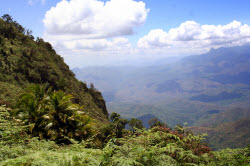Climate Change Tanzania
|
Tanzania is known for its rich and diverse wildlife. The many wildlife reserves and national parks are home to millions of exotic wild animals and birds which are found in no other continent of our planet. The healthy survival of these animals is dependent on the delicate ecological balance which if disturbed has the potential to create major havoc in the survival of the rare wildlife of the region. |
Tanzania has a tropical climate which does not vary much by the change in seasons. The variation in the climate is largely dependent on the varying topography of the country. For the fresh water supply to its natural resources, the region is highly dependent on the two rainfall seasons annually, one in December to April and the other in March to May. The regional animal, plant and human life is highly dependent on this combination of climate for its food production, water availability and basic survival. It has been estimated by international environmentalists that if the world climate changes in the current rate, by 2011 the east African regions where Tanzania is located may see an average rise in temperatures by 2 - 4 Cº and the rainfall may decrease by almost 20% in the inner parts of the country. However, the rainfall in the coastal regions may increase by almost 30%. This will result in droughts in the inner regions causing severe water supply essential for both animal and plant life. In contrast, the coastal regions will experience severe flooding which is predicted to cause the sea level to rise by almost 0.90 meters. These changes may cause the rain dependent agricultural system of the country. It is predicted that Tanzania may suffer a loss of almost 10% of its agricultural production. The prolonged dry seasons may also increase the risk of wild fires in the forested and grass lands of the country. The environmentalists have also predicted shifts in distribution of plant and animal species which will completely disrupt the current geographical and economic structure of the country.
More Articles :

|
